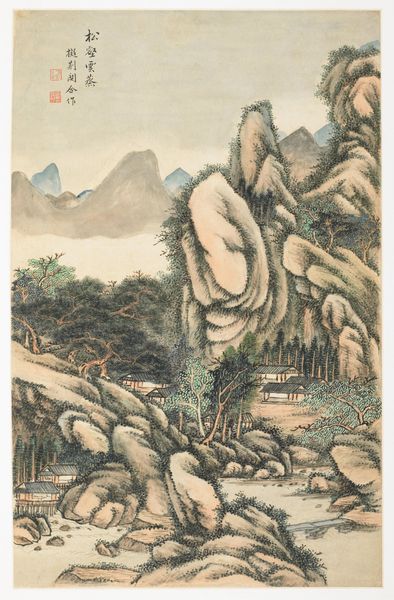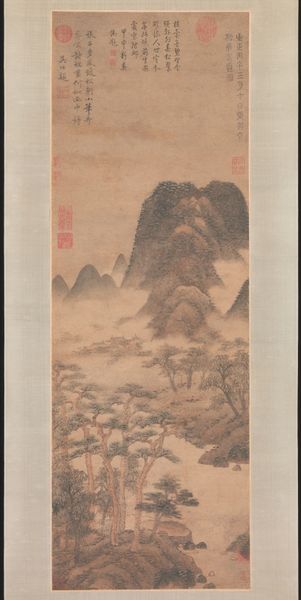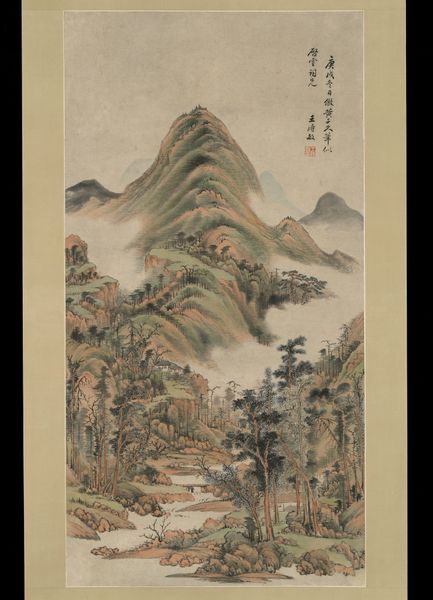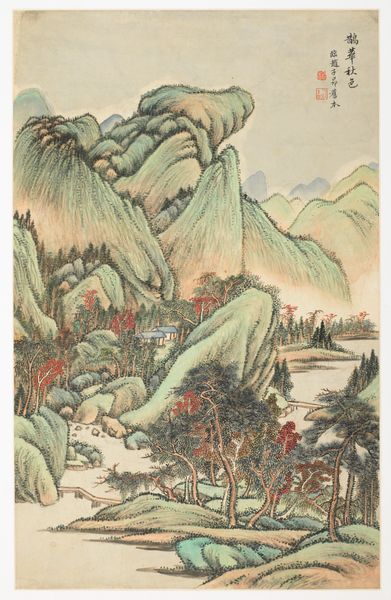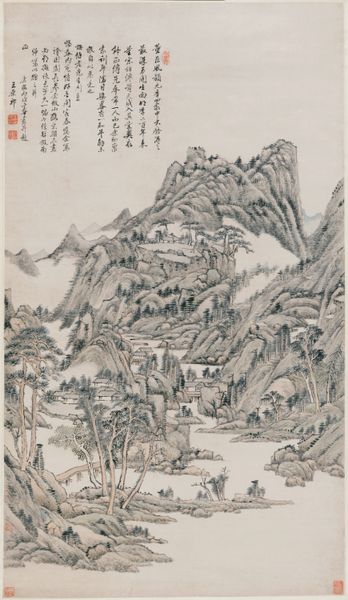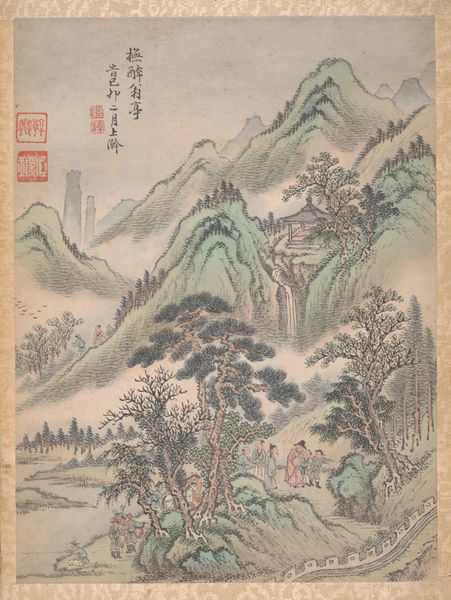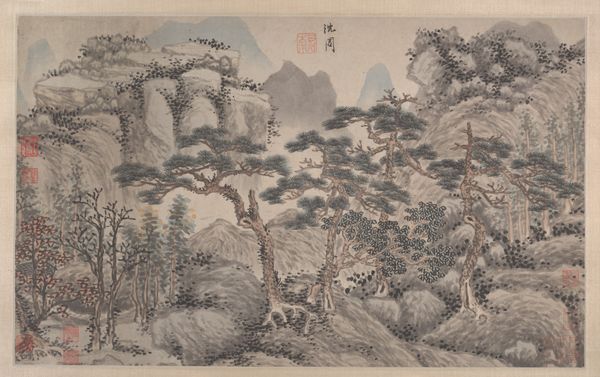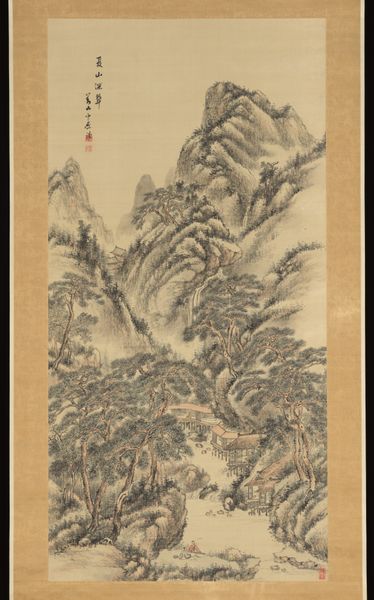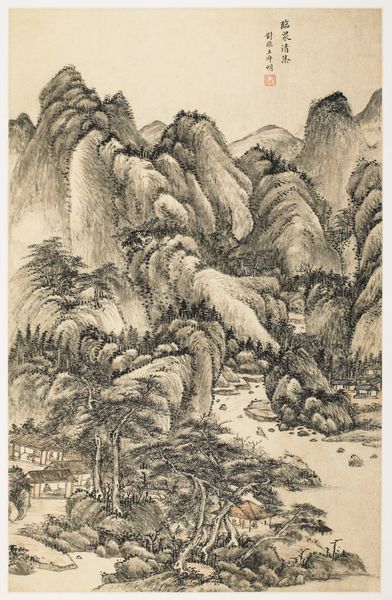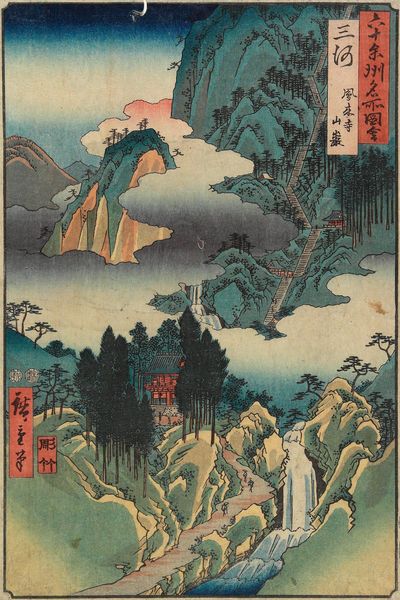
carving, tempera, painting, paper, watercolor, ink
#
water colours
#
carving
#
tempera
#
painting
#
asian-art
#
landscape
#
paper
#
watercolor
#
ink
#
coloured pencil
#
orientalism
#
line
#
watercolor
#
realism
Dimensions: 22 1/4 x 15 1/4 in. (56.52 x 38.74 cm) (image)
Copyright: Public Domain
Curator: Look at how the pale ink seems to almost drip down the layered mountainsides—a soft contrast with the stronger blacks of the forests below. Editor: It's surprisingly serene. It evokes a specific mood; like the air is cool and damp, and the sounds are muffled somehow. Where does this piece come from? Curator: This artwork, created in 1723, is called "Green Mountain Just After a Bath" by Jin Yongxi. It employs ink and watercolours on paper, which gives the impression you're describing. Editor: The title feels very accurate, and there's a visible influence of the naturalistic literati painting tradition with how Yongxi balances areas of saturated detail against broad, misty forms. I see evidence of that aesthetic-political positioning within its emphasis on ink texture, its composition as visual metaphor… Curator: The painting represents an interesting tension in literati circles, doesn’t it? The desire to remain faithful to historical precedent in painting styles and subjects with the constant pressure to be new, or unique. You can see it in his attempt at combining familiar forms and scenes. Editor: Indeed, if we look more closely at the foreground, one observes these somewhat darker, heavier treatments. Look at how those trees lean to one side— the directional emphasis contrasts rather severely against the subtle graded washes higher up, giving a greater illusion of depth, maybe? Curator: Yes, and observe where this artwork resides today; in the Minneapolis Institute of Art, halfway across the world from where it originated! These journeys of art are also indicative of broader patterns of global exchange, a result of colonialization, conflict, trade. This artwork may seem delicate but speaks to so much. Editor: True. Delving into its subtleties opens up further dimensions and perspectives for any audience. Curator: I think on that note, that's a beautiful spot to leave our listeners to explore the work for themselves.
Comments
No comments
Be the first to comment and join the conversation on the ultimate creative platform.

